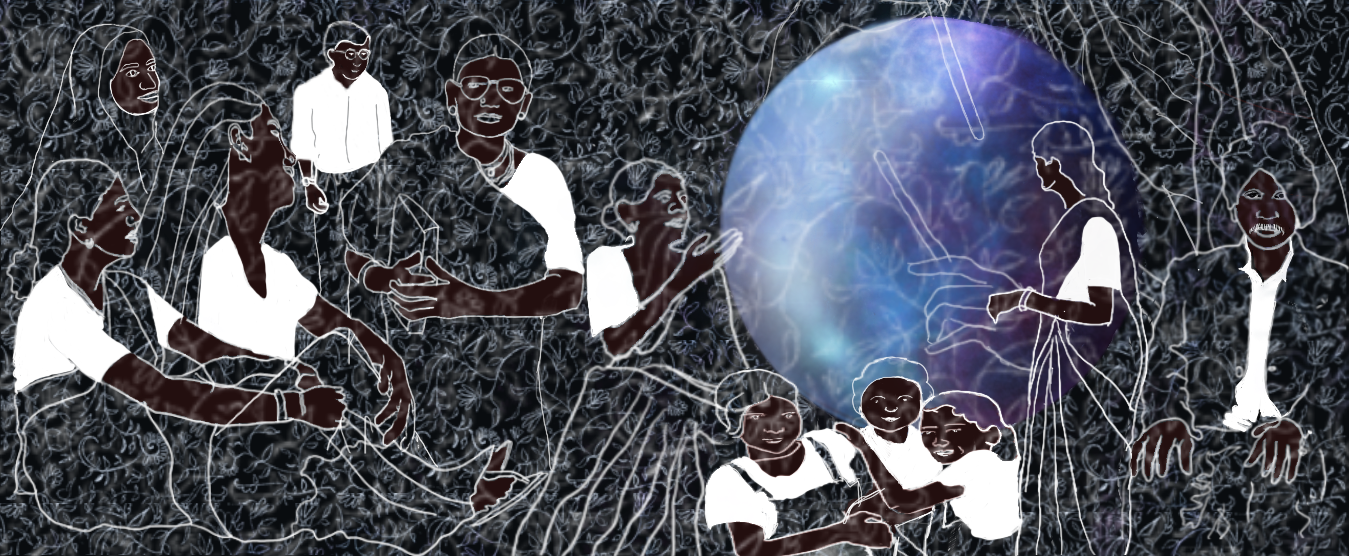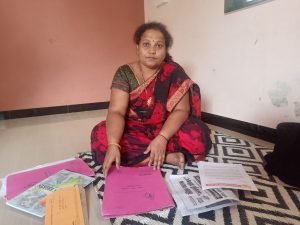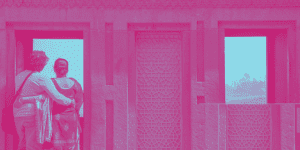“The piece of my muddy kongu hugs my eyes like a mother when my grief flows incessantly…
Where is the time for my muddy Kongu to fit on my bosom?
It turns and shifts around
In happiness, sorrow,…..
My sweaty kongu that slogs like a washing rock
Is not a sooty rag that guards my bosom, not a burden on the chest.
How shall I drag it into the streets and defame it?How shall I ruin myself by burning it?”
[Excerpt from the poem Kongu by Joopaka Subhadra,translated by K Suneetha Rani.]
These lines from Kongu (a Telugu word used mainly in Telangana for Pallu,the loose end of the saree which covers the bosom and rests on a shoulder), a poem by Joopaka Subhadra, a Dalit feminist poet from Telangana were written as a rejoinder to the poem Paitanu Thagileyali (burn the paita/kongu/pallu) by Jayaprabha, another Telugu feminist poet and critic.
The kongu/paita is a reminder of the burden of chastity and patriarchy for Jayaprabha, an upper-caste woman but it is a source of comfort and protection for Subhadra, whose struggles go beyond issues of modesty to fundamental ones – of hunger, untouchability, abuse and humiliation. That both poets experience and perceive a piece of cloth in different ways speaks of the multiplicity of narratives and histories in India. But who gets to write these histories? For the longest time, it was the upper and dominant castes who had the voice, opportunities and resources. Their stories were told freely, their joys and sorrows found creative expressions. Dalits, on the other hand, were denied these. Subhadra’s poem is not so much about dismissing Jayaprabha’s experience as it is about asserting her own. She speaks of her anger and exhaustion at being continually excluded from the ‘mainstream’ narrative of Indian history.
African-American author Maya Angelou in ‘I know why the caged bird sings’ writes: “There is no greater agony than bearing an untold story inside you.” Dalit communities have had myriad untold stories locked inside them for more than 2000 years. As a Dalit, I know the weight of this burden my ancestors bore – my nanamma (grandmother) and tathayya (grandfather) and those who came before them, and the marginalised social, political and economic histories of their lives. How does one unpack this burden?
The time has come to set these stories free.
Writing our own histories is important. In African author Chinua Achebe’s words, “Until the lions have their own historians, the history of the hunt will always glorify the hunter.” This is critical not only because it records our social, cultural and political realities but also because it validates our existence to ourselves.
Our histories are not singular. They are a rainbow of multiple narratives. Our histories include big movements like the Mahad satyagraha, the Namasudra movement in Bengal, the Dandora movement in Telangana and Andhra Pradesh and very local movements such as the Maha Dalit identity emergence in Bihar and the Ad Dharm movement in Punjab. While untouchability and oppression are themes that cut across our experiences, our histories are also influenced and defined by our land, geography, community, faith among others.
While curating the Dalit History month for BehanBox, I am elated to witness the coming together of these diverse stories. We record hitherto untold Dalit histories – the Dalit Christian women lacemakers of Narsapur in Andhra Pradesh, the Dusadh Dalit women artists of Madhubani in Bihar, women in the Madiga Reservation Porata Samiti in Telangana and Andhra Pradesh.
We explore questions of faith and religion and their social, political and cultural impact. Through personal and family histories we explore the dynamics of inter-caste households and notions of food and purity as well as caste in fashion. These stories are, at once, a community’s remembrance of its own culture and a record of the larger socio-political movements that underpinned them.
To record and write a 2000 year old history is an enormous task. Understanding the different kinds of underlying intersections in the histories is an even bigger one.
As the prominent academic Gopal Guru says Dalits have produced brilliant poetry but have been unable to theorise about their personal lives. Producing these histories is often an emotional experience and a literary expression like poetry is seen as a more effective tool to counter the existing narratives.
I imagine a time when each day becomes a day of remembrance, a day of assertion and dignified living for every Dalit. I imagine for our histories and stories to move beyond our survival, fear and of a homogenous narrative of Dalit identity. I imagine a day when our accounts– the descendants of scavengers, tanners, cobblers, pig rearers, bonded labourers, folk singers, donkey rearers, sewage cleaners, mourners, enslaved people– become the mainstream.
Till then, we commemorate and record everything we can.




